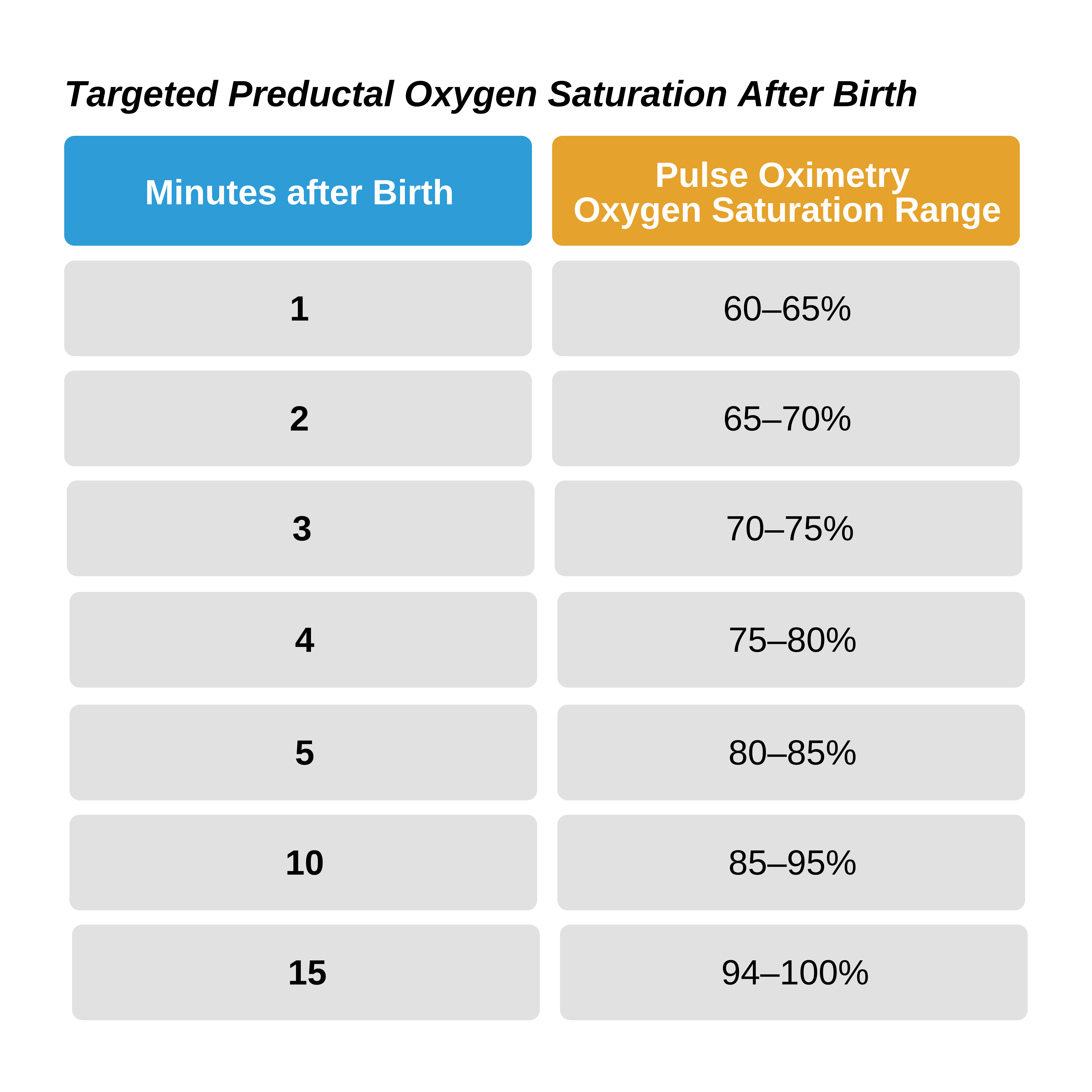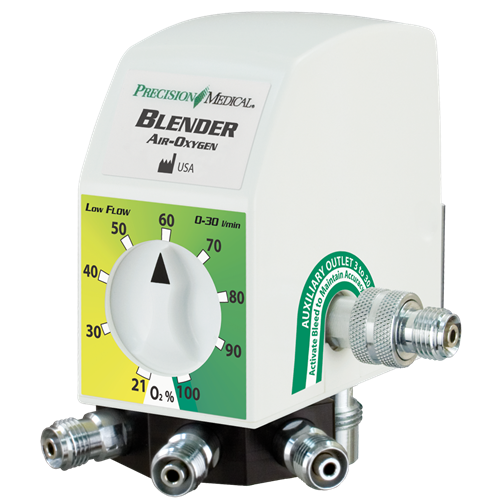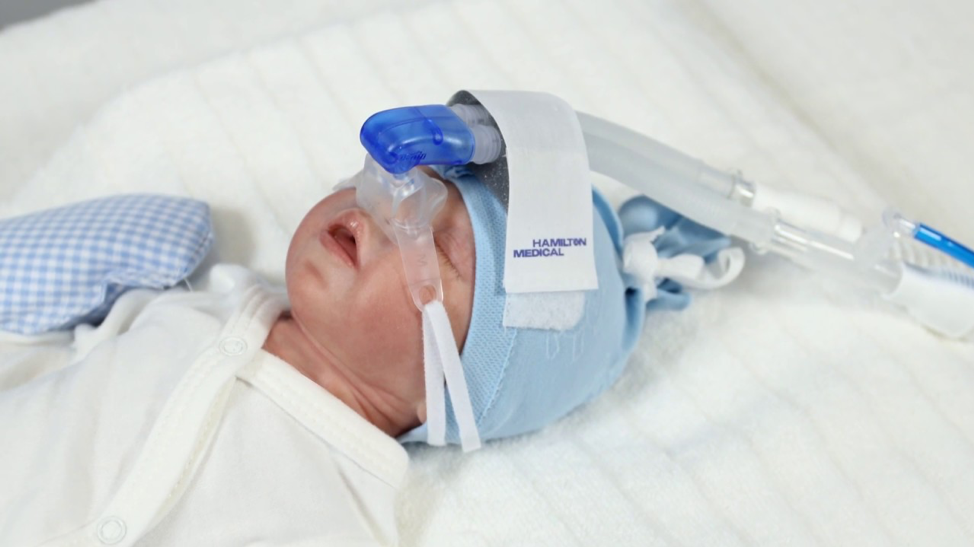Modalities Used in the Initial Steps
Pulse Oximetry
A pulse oximeter should be set up and ready to use when the neonatal resuscitation team anticipates the resuscitation of a newly born. The pulse oximeter aids in confirming hypoxemia in the presence of persistent central cyanosis and helps the team titrate supplemental oxygen.
The pulse oximeter measures the pulsatile blood flow from the capillaries of an extremity. Red blood cells (RBCs) carrying hemoglobin bound with oxygen absorb red light emitted by the pulse oximeter differently than those carrying hemoglobin unbound with oxygen. The concentration of oxygen in the hemoglobin is determined by calculating light absorption. The pulse oximeter displays the percent of bound hemoglobin as the oxygen saturation (SpO2). The oximeter can also calculate the patient’s heart rate.
The sensor should be placed in the preductal circulation path (i.e., before the ductus arteriosus). Preductal circulation refers to the blood in the heart and brain, where blood flows into an artery that attaches to the aorta before the ductus arteriosus. The team should measure preductal oxygen saturation in the right extremity as that location approximates the perfusion of oxygenated blood in the vital organs. The right hand or wrist is the best site for placing the pulse oximeter sensor during a delivery.
The left arm and legs may not represent the actual oxygen saturation of the newly born. The blood flowing in these areas may have mixed with poorly oxygenated blood because there is still right-to-left shunting through the ductus arteriosus for some time after birth.

Pulse oximeter in use on the right arm.
Preductal Oxygen Saturation
After birth, the preductal oxygen concentration takes some time to increase. Intrauterine oxygen saturation is usually at 60% during the first minute of life. As the infant transitions to breathing air, oxygen saturation gradually increases to normal values over the next 10–15 minutes. Babies who have undergone cesarean delivery may initially have a lower SpO2 value than those born vaginally.
The target preductal oxygen saturations after birth are:

Target Preductal Oxygen Saturations After Birth
Supplemental Oxygenation
Supplemental oxygenation is necessary when the preductal oxygen saturation remains below targeted values in the newly born with an adequate heart rate and labored breathing or persistent cyanosis.
Passive oxygen insufflation is administered by holding the oxygen tubing over the newborn’s nose and mouth. A flow-inflating bag or a T-piece resuscitator with a mask attached can also be held close to the infant’s face. The mask must not be held tight to the infant’s face. If a self-inflating bag is used to deliver passive oxygen insufflation, the reservoir must be open for oxygen to flow through to the baby.
Titrating Supplemental Oxygen
An oxygen blender and a flow meter attached to wall-mounted compressed gases allow the team to control supplemental oxygen concentration. A blender mixes compressed medical air and 100% oxygen. The gas mixture can be adjusted to deliver anywhere from 21% to 100% oxygen. The flow rate of supplemental oxygen can also be adjusted with a flowmeter attached to the blender. A flowmeter is a graduated cylindrical device with a floating ball demarcating the rate of gas flow in liters per minute.
The concentration of supplemental oxygen should be titrated to the baby’s predicted target preductal oxygen saturation. Titration guided by a pulse oximeter avoids hyperoxia and hypoxia. When initiating free-flow oxygen supplementation, 10 L/min of 30% oxygen are recommended starting settings on the blender.

Oxygen blender.
Continuous Positive Airway Pressure
If the infant continues to have labored breathing with a HR > 100 bpm despite receiving supplemental oxygen, then it may be necessary to initiate continuous positive airway pressure (CPAP). CPAP is not appropriate for a baby in respiratory distress with a HR < 100 bpm.

Newborn with CPAP in place.